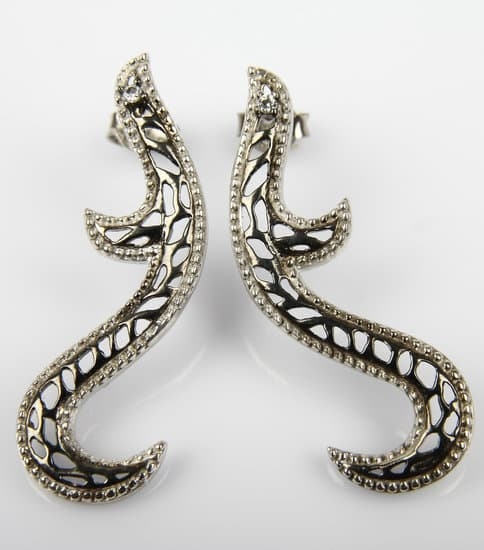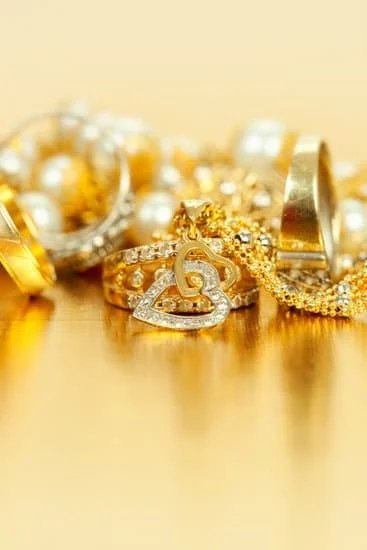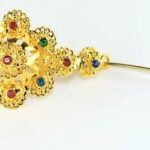Gold-plated jewelry has become increasingly popular in recent years, offering an affordable and stylish alternative to solid gold pieces. However, a common concern among many wearers is the durability and longevity of gold plating. How long does gold plated jewelry really last? This article aims to answer that question by exploring the factors that contribute to its lifespan and providing practical tips for proper care and maintenance.
Gold-plated jewelry has gained popularity due to its attractive appearance and affordability. It allows individuals to enjoy the luxurious look of gold without breaking the bank. From delicate necklaces to statement earrings, there is a wide range of gold-plated options available in the market, catering to different styles and preferences. However, as with any type of jewelry, questions arise regarding how long it will retain its golden shine.
To address these durability concerns, it is essential to understand the basics of gold plating. Gold-plated jewelry consists of a base metal coated with a layer of gold through a process called electroplating. This thin layer of gold gives the piece its desired color and luster. However, over time, this plating may wear off or fade away, especially with frequent use or exposure to certain chemicals.
In order to make informed decisions about purchasing and wearing gold-plated jewelry, it is important to delve into the various factors that influence its lifespan. Factors such as plating thickness, care techniques, and usage patterns play a significant role in determining how long the gold plating can last before showing signs of wear and tear. By understanding these factors, individuals can make educated choices about their jewelry collection while maximizing its longevity.
Understanding the Basics
Gold-plated jewelry has become a popular choice for many individuals due to its affordability and aesthetic appeal. Understanding the basics of gold-plated jewelry and the process of gold plating is essential in order to assess its durability and lifespan.
Gold-plated jewelry refers to pieces that are made from a base metal, such as brass or copper, and then coated with a thin layer of gold. The process of gold plating involves electroplating, where an electric current is used to deposit a layer of gold onto the base metal. This results in a surface that has the appearance of solid gold, but at a fraction of the cost.
The thickness of the gold plating is an important factor that determines how long gold-plated jewelry will last. The thickness is generally measured in microns (µm), and a thicker layer will offer more durability.
High-quality gold-plated pieces usually have a thickness ranging from 2-3 microns, whereas lower-quality ones may only have a thickness of 0.5 microns or less. However, it is important to note that even with thicker layers, eventually the gold plating will wear off over time.
In addition to plating thickness, proper care and usage also play significant roles in extending the lifespan of gold-plated jewelry. Harsh chemicals, such as chlorine or certain cleaning agents, can accelerate the wearing off of the gold plating. Therefore, it is recommended to remove gold-plated jewelry before swimming or engaging in any activities that involve exposure to chemicals. Furthermore, avoiding excessive friction and impact can help prevent scratches or dents on the surface of the jewelry.
By understanding these basics of gold-plated jewelry and its plating process, individuals can make informed decisions about purchasing and caring for their pieces. While it is important to remember that gold plating does have limitations compared to solid gold or other alternatives like vermeil, with proper care and maintenance, gold-plated jewelry can last for a considerable amount of time and provide a stylish and affordable option for various wearers.
Factors Affecting Lifespan
When it comes to the durability of gold-plated jewelry, several factors come into play. These factors determine how long the jewelry will maintain its golden appearance and shine. Understanding these factors can help you make informed decisions about your purchases and take appropriate measures to prolong the lifespan of your gold-plated pieces.
The thickness of the gold plating is one key factor that affects the longevity of gold-plated jewelry. The thickness of the layer determines how quickly the underlying base metal will be exposed. In general, thicker layers of gold plating tend to last longer before showing signs of wear. It is recommended to look for jewelry with a thicker gold plating, typically measured in microns, if you want it to withstand regular use over an extended period.
Proper care and maintenance also play a crucial role in preserving the lifespan of gold-plated jewelry. Just like any other piece of jewelry, gold-plated pieces need attention and care to maintain their beauty. To keep your gold-plated jewelry in good condition for longer, avoid exposing it to harsh chemicals such as chlorine or cleaning agents containing abrasives. When not wearing your jewelry, store it in a dry place away from direct sunlight or excessive heat.
Furthermore, your usage habits can impact how long your gold-plated jewelry lasts. While it may be tempting to wear your favorite pieces every day, excessive wear and tear can result in faster deterioration of the gold plating. Therefore, consider reserving your gold-plated jewelry for special occasions or when you want to add an extra touch of elegance to your outfit.
To summarize:
- Opt for thicker layers of gold plating (measured in microns) for increased durability.
- Take proper care by avoiding exposure to harsh chemicals and storing the jewelry properly.
- Use gold-plated jewelry sparingly to reduce wear and tear.
By understanding these factors and taking appropriate measures to prolong the lifespan of your gold-plated jewelry, you can enjoy its beauty for an extended period. However, it is important to note that even with proper care, the gold plating will eventually wear off over time. Therefore, it is recommended to have realistic expectations regarding the average lifespan of gold-plated jewelry and consider alternative options if you prefer longer-lasting pieces.
The Role of Base Metal
Gold-plated jewelry, as the name suggests, consists of a thin layer of gold applied onto a base metal. The choice of base metal plays a crucial role in determining the durability and lifespan of gold-plated jewelry. Different base metals can have varying impacts on how long the gold plating will last.
One commonly used base metal in gold-plated jewelry is copper. Copper provides good durability and has excellent adhesion properties, making it an ideal choice for creating a strong bond between the gold layer and the base metal. However, copper can sometimes react with certain chemicals or moisture in the air, causing it to tarnish over time. This can affect the appearance of the gold plating and reduce its longevity.
Another popular base metal used in gold-plated jewelry is brass. Brass is an alloy made primarily of copper and zinc, offering increased resistance to corrosion compared to pure copper. This makes brass a suitable option for enhancing the durability of gold-plated pieces. Additionally, brass can be easily shaped into intricate designs, making it a desirable choice for creating detailed jewelry.
Stainless steel is also frequently used as a base metal for gold-plated jewelry due to its strength and resistance to rust and tarnish. Stainless steel provides excellent durability and offers protection against common wear factors such as moisture and scratches. It is particularly well-suited for pieces that may encounter more wear and tear or require frequent cleaning.
Ultimately, when considering the role of the base metal in determining the durability of gold-plated jewelry, it is important to choose a high-quality piece that uses a durable base metal like copper, brass, or stainless steel. Checking for reputable sellers and brands known for using quality materials can help ensure that you are getting a piece that will stand up to everyday wear.
In summary, understanding the impact of different base metals on the overall durability of gold-plated jewelry is essential when evaluating its lifespan. Copper offers good adhesion but may tarnish over time, while brass provides increased resistance to corrosion.
Stainless steel is prized for its strength and ability to withstand wear and tear. By considering the base metal used in gold-plated jewelry, individuals can make informed choices about their purchases and enjoy longer-lasting pieces that maintain their beauty over time.
Caring for Gold-Plated Jewelry
Gold-plated jewelry is a popular choice due to its affordability and resemblance to solid gold. However, it is important to properly care for gold-plated pieces in order to maintain their appearance and extend their lifespan. By following some simple tips and techniques, you can ensure that your gold-plated jewelry remains in good condition for as long as possible.
One of the most important aspects of caring for gold-plated jewelry is avoiding exposure to harsh chemicals. Chemicals such as bleach, chlorine, and even certain cleaning agents can cause the gold plating to wear off more quickly. It’s best to remove your gold-plated jewelry before swimming or participating in activities where it may come into contact with these substances.
In addition to avoiding chemicals, it’s also crucial to keep your gold-plated jewelry clean. You can do this by gently wiping it with a soft cloth after each wear to remove any dirt or oils that may have accumulated. Avoid using abrasive materials such as brushes or rough cloths, as these can scratch the surface of the gold plating.
To further protect your gold-plated jewelry, consider storing it properly when not in use. Store each piece separately to prevent scratching or tangling, and keep them away from direct sunlight or extreme heat that could cause the plating to fade or discolor. Many people find that keeping their jewelry in a lined box or pouch helps prevent damage.
By following these simple tips and techniques for caring for your gold-plated jewelry, you can significantly extend its lifespan. With proper care and maintenance, you’ll be able to enjoy the beauty of your gold-plated pieces for years to come.
Signs of Wear and Tear
Identifying Common Signs of Wear and Tear
Over time, gold-plated jewelry may show signs of wear and tear, indicating that the gold plating is wearing off. It’s important to be able to identify these signs so that appropriate action can be taken. One common sign is a change in color and appearance.
As the gold plating starts to wear off, the base metal underneath becomes more visible, giving the piece a dull or tarnished look. In some cases, the jewelry may also start to develop scratches or chips on its surface.
Another indication that the gold plating is wearing off is when the jewelry starts to lose its shine and luster. Gold-plated pieces are known for their dazzling appearance, but as the plating starts to fade away, the radiance diminishes. Additionally, certain parts of the jewelry that experience more friction or come into contact with sweat or lotions, such as chain links or clasps, may exhibit faster signs of wear.
What to Do When Gold Plating Wears Off
When you notice that your gold-plated jewelry is showing signs of wear and tear and the gold plating is wearing off, there are a few options available depending on your preference and budget. One option is to simply embrace the new look of your piece if it still holds sentimental value or has an appealing aesthetic despite the fading gold plating. This can give your jewelry a vintage or antique character which some people find charming.
If you prefer to restore the piece back to its original state with intact gold plating, you may consider having it re-dipped by a professional jeweler. This involves stripping away the old worn-out layer of gold and applying a fresh coat of new gold plating onto the base metal underneath.
However, it’s worth noting that re-dipping can be relatively expensive depending on factors such as the size of the jewelry and the type of gold used for plating.
Alternatively, if the piece does not have significant sentimental or monetary value, you may choose to replace it with a new gold-plated item. This can be a cost-effective solution, especially for trendy or fashion-forward pieces that were already purchased at an affordable price. However, it’s important to keep in mind that the lifespan of gold-plated jewelry will remain limited, so proper care and maintenance should still be followed to ensure its longevity.
Enhancing Lifespan
Gold-plated jewelry, while beautiful and affordable, requires some extra care to ensure its durability and longevity. In this section, we will discuss various ways to enhance the lifespan of gold-plated jewelry by taking precautionary measures and avoiding certain activities that can cause damage.
One effective way to prolong the lifespan of gold-plated jewelry is to avoid exposing it to harsh chemicals. Chemicals such as bleach, chlorine, and strong household cleaners can strip away the gold plating over time.
It is important to remove your gold-plated jewelry before swimming in chlorinated pools, using cleaning products, or applying any type of hair spray or perfume that contains chemicals. By doing so, you can protect the integrity of the gold plating and prevent it from wearing off prematurely.
Furthermore, it is advisable to remove your gold-plated jewelry during certain activities that may subject it to excessive wear and tear. These activities include exercising, gardening, or engaging in any manual labor where there is a risk of physical impact or exposure to moisture and sweat.
Additionally, it is recommended to remove your gold-plated jewelry before showering or bathing, as prolonged exposure to water can degrade the plating. Taking these precautions will help extend the lifespan of your gold-plated pieces.
| Enhancing Lifespan Tips |
|---|
| Avoid exposure to harsh chemicals |
| Remove during swimming in chlorinated pools |
| Avoid contact with cleaning products |
| Avoid contact with hair spray or perfume containing chemicals |
| Remove during exercising, gardening, or manual labor |
| Remove before showering or bathing |
By incorporating these practices into your daily routine, you can significantly prolong the lifespan of your gold-plated jewelry and keep it looking its best for a longer period of time. These tips not only apply to gold-plated jewelry but also to other types of plated jewelry, such as silver or rose gold plating. Taking good care of your gold-plated pieces will ensure that they continue to shine and bring joy for years to come.
Verifying Quality
When it comes to purchasing gold-plated jewelry, it is important to ensure that you are getting a high-quality piece that will last. To help consumers make informed decisions, it is crucial to know how to verify the quality of gold-plated jewelry before making a purchase. By following a few simple guidelines and considering reputable sellers and brands, buyers can have confidence in their purchase.
One of the key factors in verifying the quality of gold-plated jewelry is understanding the thickness of the gold plating. Gold plating is measured in microns, with a higher micron thickness indicating better durability. Generally, a thicker layer of gold plating will last longer and be more resistant to wear and tear. It’s recommended to look for gold-plated jewelry with a minimum plating thickness of 2 microns or more for better longevity.
Another important aspect to consider when assessing the quality of gold-plated jewelry is the base metal used. The base metal serves as the foundation for the gold plating and can greatly impact its durability. Common base metals used in gold-plated jewelry include brass, copper, and stainless steel.
Brass and copper tend to be softer metals compared to stainless steel, which may affect the longevity of the gold plating. Therefore, if you are looking for a more durable option, consider pieces with a stainless steel base.
To ensure you are purchasing high-quality gold-plated jewelry, it is essential to buy from reputable sellers and brands. Look for established companies that have a track record of offering trustworthy products. Additionally, reading customer reviews can provide valuable insights into both product quality and customer satisfaction. Popular brands known for their high-quality gold-plated jewelry include Mejuri, Gorjana, and Kate Spade.
Table: Key Factors in Verifying Quality of Gold-Plated Jewelry
| Verifying Quality Factors | Description |
|---|---|
| Plating Thickness | A higher micron thickness indicates better durability. Look for gold-plated jewelry with a minimum plating thickness of 2 microns or more. |
| Base Metal | The base metal used can greatly impact durability. Stainless steel is generally more durable than brass or copper. |
| Reputable Sellers and Brands | Purchase from established companies with positive customer reviews. Recommended brands include Mejuri, Gorjana, and Kate Spade. |
By understanding and considering these factors, consumers can make informed decisions when purchasing gold-plated jewelry. It is important to prioritize quality and choose reputable sellers to ensure a long-lasting piece that you can enjoy for years to come.
Alternatives to Gold Plating
Gold Vermeil: A High-Quality Alternative
For individuals who desire the luxurious look of gold without the concerns about durability, gold vermeil presents an appealing alternative to gold-plated jewelry. Gold vermeil refers to a thick layer of gold that is permanently bonded onto silver or another base metal. Unlike gold plating, which typically uses a thin layer of gold, gold vermeil offers a more substantial and long-lasting coating.
To qualify as gold vermeil, the piece must meet specific criteria. The base metal must be sterling silver, and the thickness of the gold layer should be at least 2.5 microns. This requirement ensures that the piece will retain its golden hue for an extended period, even with regular wear. Additionally, reputable manufacturers often apply a protective coating on top of the gold layer to prevent tarnishing and wear.
One advantage of choosing gold vermeil over gold-plated jewelry is its longevity. With proper care and maintenance, a high-quality gold vermeil piece can last for years or even decades. It is important to remember that like any other type of jewelry, regular upkeep is necessary to preserve its appearance and prevent damage.
Solid Gold: The Ultimate Investment
For those seeking jewelry with exceptional longevity and value, solid gold pieces are undoubtedly worth considering. Solid gold jewelry is precisely what it sounds like – it consists entirely of solid golden material throughout the entire piece. Whether it’s made from 10k, 14k, or 18k gold, solid pieces offer unmatched durability compared to their plated counterparts.
Unlike plated or coated options where the surface material may wear off over time, solid-gold pieces will maintain their appearance indefinitely with proper care. While they require a larger investment upfront due to their pure composition, they can be considered lifelong treasures that can be passed down through generations.
When purchasing solid gold jewelry, it is essential to consider factors such as karat purity, color, and price. Different karat purities affect both the appearance and durability of the piece, so it’s crucial to select one that aligns with personal style preferences and budgetary constraints.
Exploring Other Alternatives
Apart from gold vermeil and solid gold options, there are various alternative jewelry choices available for those seeking long-lasting pieces. Some popular alternatives include stainless steel, titanium, and platinum jewelry. Stainless steel and titanium both possess excellent durability and resistance to tarnish or corrosion. Platinum, on the other hand, offers a prestigious choice with exceptional longevity due to its natural hardness.
When considering alternatives, it’s important to weigh personal preferences with regards to aesthetics, budget, and desired level of durability. Exploring these alternatives can lead individuals to find their ideal jewelry that suits their needs while providing long-lasting beauty.
Conclusion
In conclusion, gold-plated jewelry can be a beautiful and affordable option for those looking to add some sparkle to their wardrobe. However, it is important to understand the factors that contribute to its lifespan and make an informed decision about its suitability for your needs.
Throughout this article, we have discussed various factors that affect the longevity of gold-plated jewelry, such as plating thickness, care, and usage. We have also explored the role of base metals and how they can impact durability. Additionally, we have provided practical tips for caring for gold-plated pieces and identifying signs of wear.
While gold-plated jewelry can last anywhere from several months to a few years with proper care, it may not be the best choice for everyone. Individuals with highly acidic skin or those who engage in activities that expose their jewelry to harsh chemicals or frequent abrasion may find that gold plating wears off more quickly. In these cases, it may be worth considering alternatives such as gold vermeil or solid gold pieces.
Ultimately, the lifespan of gold-plated jewelry depends on individual factors and preferences. It is important to consider how often you plan to wear the jewelry and the level of care you are willing to provide. If you are seeking a longer-lasting option or if you have specific concerns about durability, it is advisable to explore alternative options.
Before purchasing any gold-plated jewelry, it is essential to verify its quality by researching reputable sellers and brands. This will help ensure that you are investing in a piece that will withstand regular use and maintain its shine for longer.
Frequently Asked Questions
How long does it take for gold-plated jewelry to wear off?
The length of time it takes for gold-plated jewelry to wear off largely depends on the specific piece of jewelry and how frequently it is worn. Gold plating is a thin layer of gold applied to a base metal, which can gradually wear off with regular use and contact with elements like water, sweat, and chemicals.
Cheaper gold-plated jewelry may wear off more quickly compared to higher-quality pieces. On average, gold plating can last anywhere from several months to a few years before signs of wear become noticeable, at which point the underlying base metal may start to show through.
Are gold-plated jewelry worth it?
Whether gold-plated jewelry is worth it or not is subjective and depends on individual preferences and priorities. Gold-plated jewelry tends to be more affordable compared to solid gold pieces, making them an attractive option for those who want the look of gold without the higher price tag. They can be a fashionable choice for occasional wear or for trendy pieces that might go out of style in the future.
However, it’s important to note that gold-plating will eventually wear off, requiring re-plating or causing the piece to lose its golden appearance entirely. If longevity and durability are essential factors for you, investing in solid gold or other longer-lasting alternatives may be more worthwhile.
How long does 14K plated jewelry last?
The lifespan of 14K gold-plated jewelry will also depend on various factors such as quality, care, and usage patterns. In general, 14K gold plating refers to a relatively thick layer of 14 karat gold applied onto a base metal.
This thicker layer can contribute to increased durability compared to lower karatage options like 10K or 18K platings. With proper care and avoiding exposure to harsh conditions (such as excessive moisture or chemicals), 14K plated jewelry has the potential to last longer than less durable options.

Welcome to my jewelry blog! My name is Sarah and I am the owner of this blog.
I love making jewelry and sharing my creations with others.
So whether you’re someone who loves wearing jewelry yourself or simply enjoys learning about it, be sure to check out my blog for insightful posts on everything related to this exciting topic!





